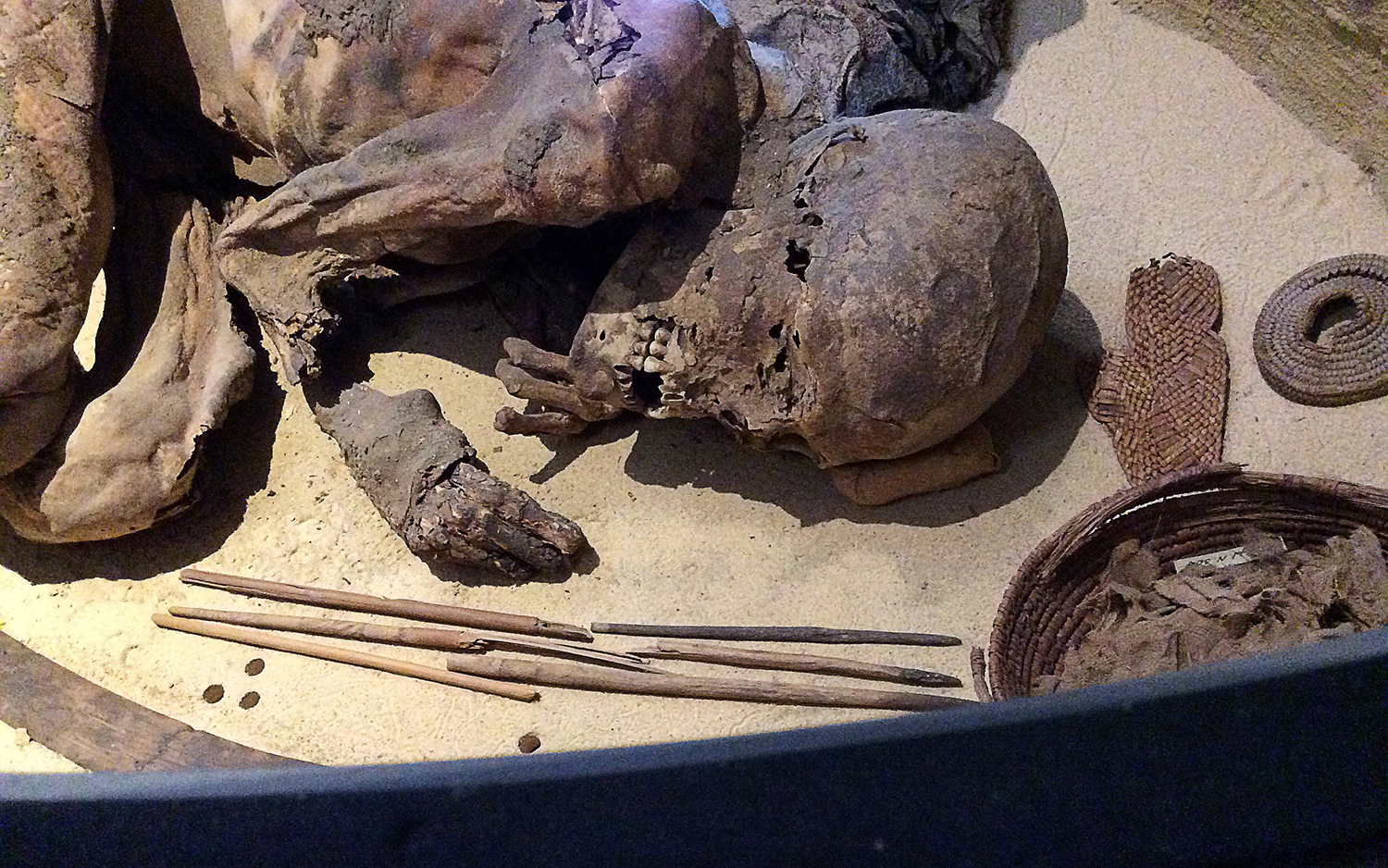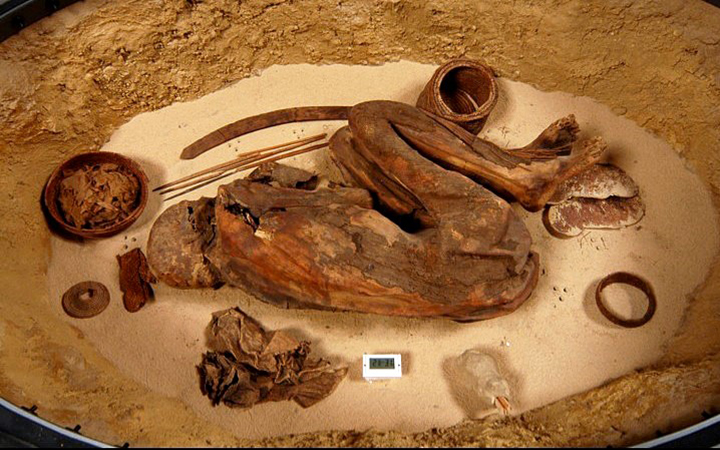This Ancient Mummy Is Older Than the Pharaohs

Embalming in ancient Egypt predated the pharaohs, an ancient mummy reveals. That would mean that the practice began at least 1,500 years earlier than once thought.
The mummy — an adult male curled on its left side in a fetal pose — is about 6,000 years old. It was previously thought to be naturally preserved by desert conditions at the site where it was buried. But the first-ever tests performed on the remains showed that the mummy was embalmed, making it the earliest known example of Egyptian mummification, researchers reported in a new study.
Further examination showed that the ancient embalmers used multiple ingredients to preserve the corpse, employing a similar recipe to the ones used 2,500 years later, when mummification in Egypt was at its peak. [Photos: The Amazing Mummies of Peru and Egypt]
More than a century ago, the mummy was discovered in Egypt. The exact location is unknown, though it is thought to have come from the ancient southern city of Gebelein on the Nile River, and represents a man who was about 20 to 30 years old when he died, the scientists reported. The mummy was acquired in 1901 by the Egyptian Museum in Turin, Italy, and dates to 3700 B.C. to 3500 B.C., according to the study.
Neither the dealer who sold the mummy nor the museum that displayed it ever applied any type of conservation treatment to the fragile remains, "hence it provides a unique opportunity for analysis," the researchers wrote.

Previously, the scientists had analyzed fragments of mummy funeral wrappings that came from another location, dating to approximately the same period as the Turin mummy, and they found traces of compounds that hinted at embalming procedures. But the Turin mummy provided researchers with a rare chance to hunt for similar evidence on a preserved body, lead study author Jana Jones, a research fellow with the Department of Ancient History at Macquarie University in Sydney, Australia, said at a news briefing on Tuesday (Aug. 14).
The researchers sampled linen fragments from the mummy's torso and right wrist, as well as from a woven basket that had been buried alongside the remains. Plant oils and animal fats permeated the ancient fabric, and the scientists pieced together an embalming "recipe" from the compounds that they found, which included sugar or gum, conifer resin, aromatic plant extracts, and antibacterial agents. These ingredients were in similar proportions to those found in balms used during the dynastic period, according to the study.
Sign up for the Live Science daily newsletter now
Get the world’s most fascinating discoveries delivered straight to your inbox.
The Turin mummy is so old that it even predates written language (the earliest known evidence of writing dates to about 3400 B.C.). So, it's likely that the embalming instructions were preserved verbally "and passed down through generations," Jones said at the briefing.
Not only did the mummy confirm that prehistoric Egyptians embalmed their dead, but it also placed the procedure in more than one location: The funeral wrappings that the scientists described in 2014 were found about about 124 miles (200 kilometers) away from the spot where the Turin mummy was likely buried, Jones said.
In pushing back the beginnings of Egyptian embalming by more than a millennium, the new findings offer tantalizing clues about social behavior, religious beliefs and scientific expertise in the region's prehistoric communities, Jones said.
"They had a well-developed belief in the afterlife — they wanted their bodies to be preserved," she explained. "And they had a knowledge of the science that went into preserving the body."
The findings were published online Wednesday (Aug. 15) in the Journal of Archaeological Science.
Original article on Live Science.

Mindy Weisberger is an editor at Scholastic and a former Live Science channel editor and senior writer. She has reported on general science, covering climate change, paleontology, biology and space. Mindy studied film at Columbia University; prior to Live Science she produced, wrote and directed media for the American Museum of Natural History in New York City. Her videos about dinosaurs, astrophysics, biodiversity and evolution appear in museums and science centers worldwide, earning awards such as the CINE Golden Eagle and the Communicator Award of Excellence. Her writing has also appeared in Scientific American, The Washington Post and How It Works Magazine. Her book "Rise of the Zombie Bugs: The Surprising Science of Parasitic Mind Control" will be published in spring 2025 by Johns Hopkins University Press.









